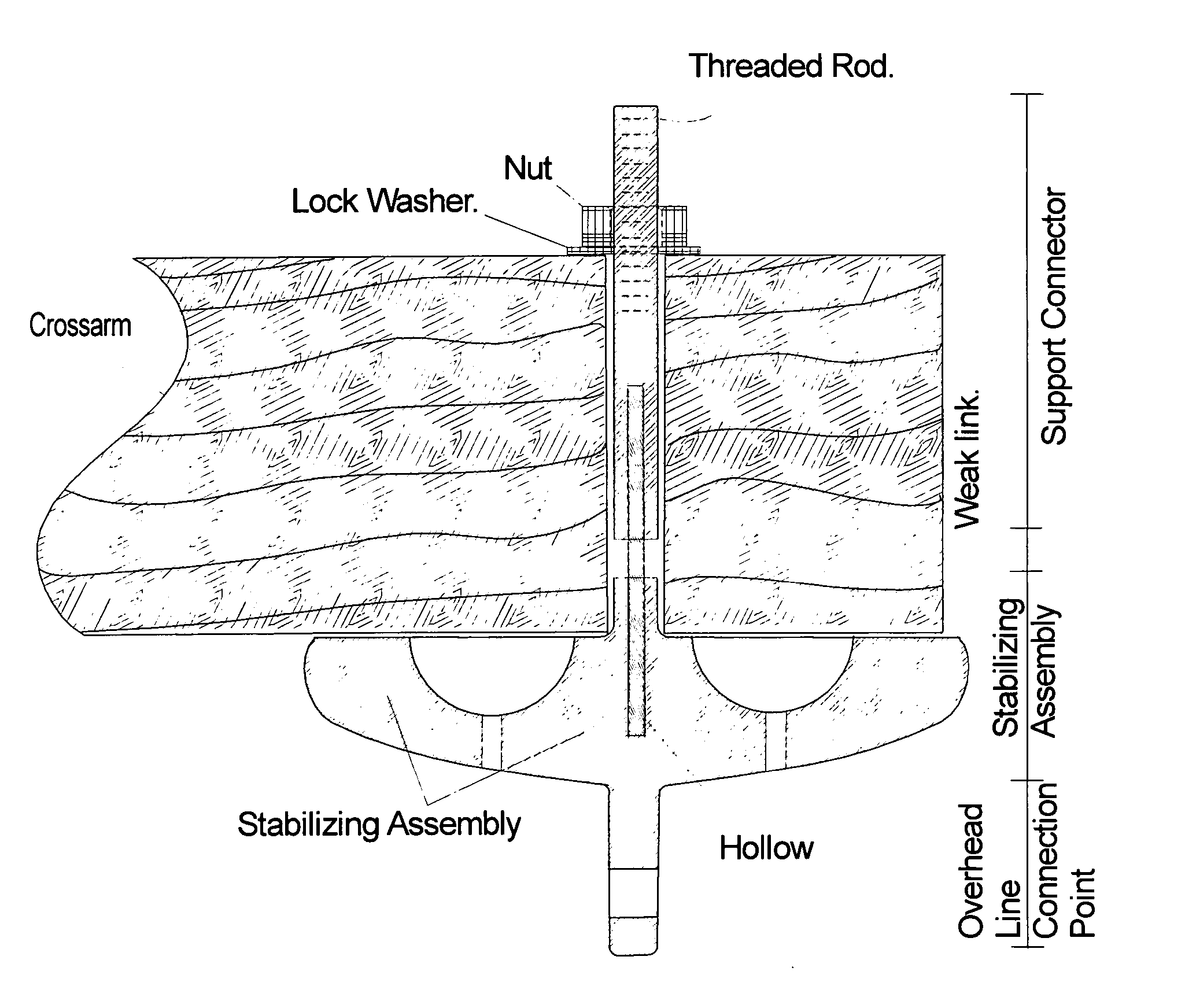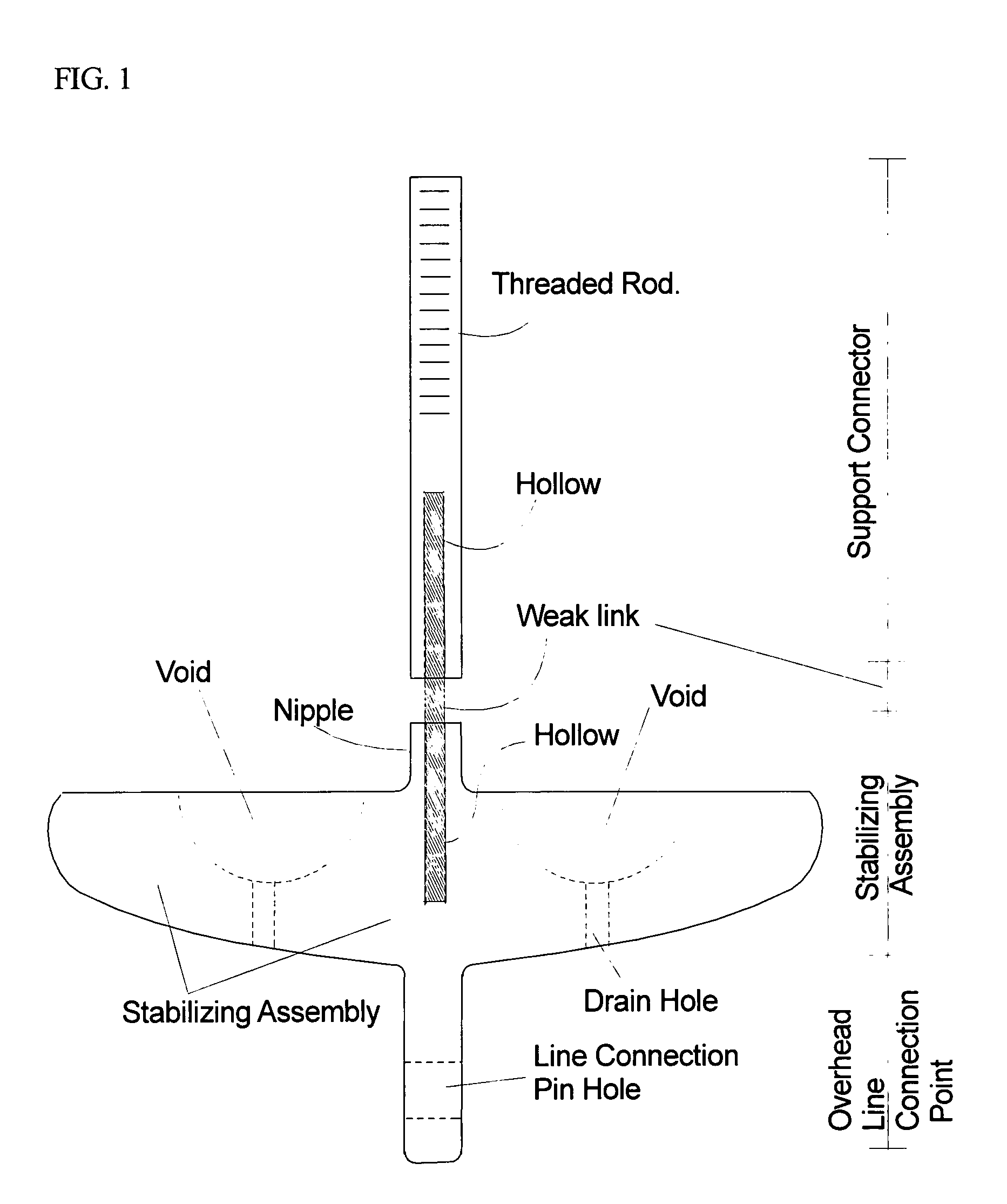Breakaway support for overhead lines
a technology for overhead lines and breakaway supports, which is applied in the direction of machine supports, couplings, manufacturing tools, etc., can solve the problems of breakaway support failure, structural component failure, crossarm snapping, etc., and achieve the effect of reducing the stress produced in the weak link, increasing the footprint, and reducing the stress in the weak link
- Summary
- Abstract
- Description
- Claims
- Application Information
AI Technical Summary
Benefits of technology
Problems solved by technology
Method used
Image
Examples
Embodiment Construction
[0024] An exhaustive search of existing patents failed to identify a product that provides the advantages that the breakaway support for overhead lines provides. Likewise an industry search failed to identify a product that competes with the breakaway support for overhead lines. At least one type of breakaway device has a United States patent. This device (U.S. Pat. No. 5,315,064) is for low voltage (600v or less) application. In order to work successfully, this device requires the service connection to be broken. The breakaway support for overhead lines can work on both high and low voltage electrical lines. Furthermore the breakaway support for overhead lines does not require the service connection to be broken. Lower voltage communications conductors can remain on the ground and continue to provide service to their clients. Furthermore the breakaway support for overhead lines addresses the concern of transverse loading (primarily wind load though other loads are conceivable). A l...
PUM
 Login to View More
Login to View More Abstract
Description
Claims
Application Information
 Login to View More
Login to View More - R&D
- Intellectual Property
- Life Sciences
- Materials
- Tech Scout
- Unparalleled Data Quality
- Higher Quality Content
- 60% Fewer Hallucinations
Browse by: Latest US Patents, China's latest patents, Technical Efficacy Thesaurus, Application Domain, Technology Topic, Popular Technical Reports.
© 2025 PatSnap. All rights reserved.Legal|Privacy policy|Modern Slavery Act Transparency Statement|Sitemap|About US| Contact US: help@patsnap.com



